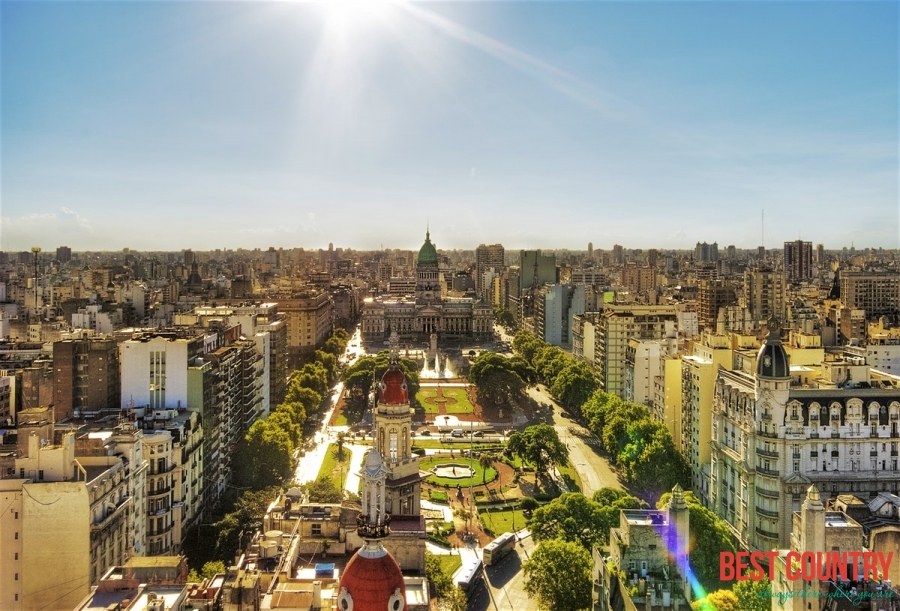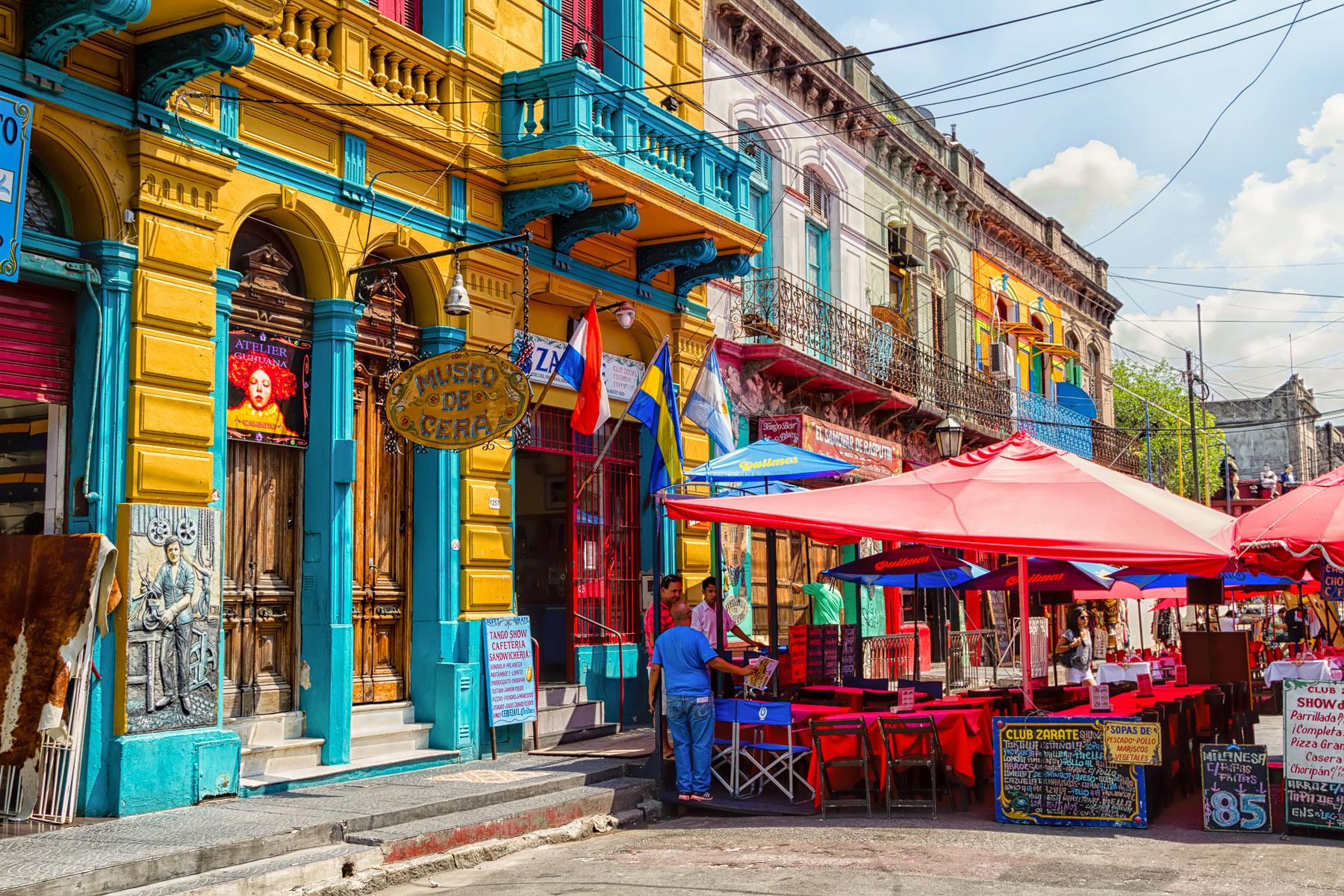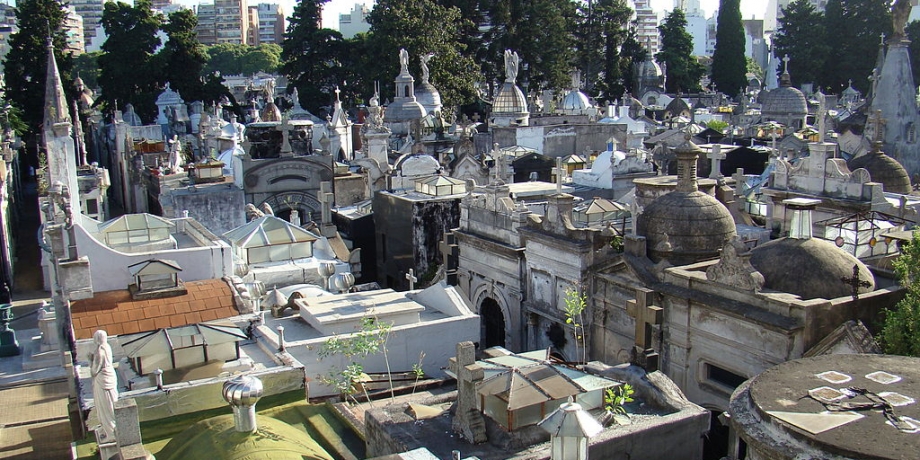Buenos Aires is the capital of the Argentine Republic. The name means fair winds, or literally good airs in Spanish. It is one of the largest cities in Latin America, with a lot of cultural offerings, and is the point of departure for travelling to the rest of the country.
Buenos Aires is the capital of Argentine
 Inhabitants of Buenos Aires are called portenos, "people from the port", implying that many of the inhabitants are immigrants in some ways or another. Buenos Aires is a singular, open, and integrating destination that allows the visitor not only to view the city but also to have an exceptional urban adventure.
Inhabitants of Buenos Aires are called portenos, "people from the port", implying that many of the inhabitants are immigrants in some ways or another. Buenos Aires is a singular, open, and integrating destination that allows the visitor not only to view the city but also to have an exceptional urban adventure.
Buenos Aires is a big city, so check the districts section for detailed listings.
If you are a fan of walking in green open spaces and parks in big cities like Buenos Aires, be sure not to miss a promenade in Palermo, a beautiful area in the northern part of the city.
Here you will find not only open spaces to walk in but also a large lake where you can rent paddle boats and an huge flower garden that is free to enter! Although the Japanese and the botanical gardens and the surroundings are very nice, they are also very noisy as several major roads traverse the area. For a quiet, shady walk or jog head to the golf course north of the railway tracks.
Another great place to walk along and experience Argentine street life is El Puerto de Buenos Aires. Its personality however is quite contrasting during the day and during the night.
 La Boca has the Caminito pedestrian street with arts and crafts. There is also a river cruise you can take from there where you can see a huge picturesque metal structure across the river. You can try and catch a rowboat to Avellaneda on the other side of the water for 0.50 pesos, but you will have to try your luck as the rower may not allow you on citing that its dangerous. La Boca is famous for Tango and you can often catch glimpses of Tango dancers practicing in the streets. If you fancy having a picture taking with a tango dancer you can but expect to pay a small fee. In addition to tango, La Boca is famous for its football, and you can take a tour of the La Bombonera Stadium where the buildings are painted in bright colors.
La Boca has the Caminito pedestrian street with arts and crafts. There is also a river cruise you can take from there where you can see a huge picturesque metal structure across the river. You can try and catch a rowboat to Avellaneda on the other side of the water for 0.50 pesos, but you will have to try your luck as the rower may not allow you on citing that its dangerous. La Boca is famous for Tango and you can often catch glimpses of Tango dancers practicing in the streets. If you fancy having a picture taking with a tango dancer you can but expect to pay a small fee. In addition to tango, La Boca is famous for its football, and you can take a tour of the La Bombonera Stadium where the buildings are painted in bright colors.
The prices for almost everything in La Boca tend to be 2 to 3 times higher compared to the rest of the city. It's very touristy since it is an enjoyable place with some authentic Argentine sights. La Boca is probably best to be enjoyed during the day when the streets are crowded and there are other tourists around, it is generally advised to be avoided at night.
There is no Subte to La Boca, but many buses go there.
 The Cementerio de la Recoleta: This is where all the rich families in Buenos Aires have their final resting places. Expect to see big ornate tombs. Be sure to visit the tomb of Eva Peron, the daughter of an aristocrat and beloved First Lady who, despite having the most visited tomb in the cemetery, is considered by many to be too close toward the people for eternal interment in Recoleta.
The Cementerio de la Recoleta: This is where all the rich families in Buenos Aires have their final resting places. Expect to see big ornate tombs. Be sure to visit the tomb of Eva Peron, the daughter of an aristocrat and beloved First Lady who, despite having the most visited tomb in the cemetery, is considered by many to be too close toward the people for eternal interment in Recoleta.
The Palermo Viejo district: This is a trendy neighborhood with charming cobblestone streets, bookstores, bars, and boutiques; definitely better than the touristic San Telmo area for a nighttime excursion. The Palermo station, on D line, is the closest metro stop.
San Telmo: Best visited on Sundays when tourists and locals alike flood in to attend the weekly street fair and flea market. Be watchful for good deals, and bring in your own water, as it's quite expensive here. On Sunday nights, there is a tango performance in the lovely plaza, which is specifically for tourists. (Visit an underground tango club for the most amateur experience. If there is advertising, or disco ball, then it's not an amateur)
The city also plays host to musical festivals, some of the largest of which are Quilmes Rock, Creamfields BA and the Buenos Aires Jazz Festival.
Notable streets
Avenida Alvear passes through the upscale Recoleta area, and is the address for five-star hotels and embassies, many of them former mansions.
Caminito, colorfully restored by local artist Benito Quinquela Martín
Avenida Corrientes, a principal thoroughfare in Buenos Aires, and intimately tied to the Tango and Porteño culture
Avenida del Libertador connects downtown to upscale areas in the northwest, passing by many of the city's best-known museums, gardens and cultural points of interest
Avenida de Mayo is often compared with those of Madrid, Barcelona and Paris for its sophisticated buildings of Art Nouveau, Neoclassic and eclectic styles
Florida Street, a downtown pedestrian street
Avenida 9 de Julio, one of the widest avenues in the world; its name honors Argentina's Independence Day
Neighborhoods
Belgrano (tipa-lined residential streets, Tudor architecture and numerous museums)
La Boca (the old port district still maintains its 19th-century ambience)
Palermo (a trendy neighborhood filled with restaurants, shops and clubs called boliches)
Parque Patricios (technology district)
Puerto Madero (these 1880-era docklands are now the city's newest neighborhood)
Recoleta (the traditionally upscale district combines Parisian architecture with trendy highrises and a variety of cultural venues)
Retiro (Art Nouveau cafés and restaurants among Art Deco office architecture)
San Telmo (one of the oldest neighborhoods of Buenos Aires, this area is characterized by well-preserved 19th century architecture)
Parks
Parque Tres de Febrero (this park, one of the city's largest, is home to a rose garden and paddleboat lake)
Botanical Gardens (among the oldest in Latin America and an easy walk to other Palermo-area sights)
Buenos Aires Japanese Gardens (the largest of its type in the World, outside Japan)
Plaza de Mayo (surrounded by national and city government offices, this square has been central to many of Argentina's historical events)
Plaza San Martín (central to the Retiro area, the leafy park is surrounded by architectural landmarks)
Recoleta Cemetery (includes graves of many of Argentina's historical figures, including several presidents and scientists, as well many among Argentina's influential families)
Buenos Aires Zoo (renown for its collection and the Hindu Revival elephant house)
Landmarks
Cabildo (seat of government house during colonial times)
Caminito (renowned for Benito Quinquela Martín's pastel hues and wall reliefs)
Casa Rosada (the official seat of the executive branch of the Argentine government)
Central Post Office (soon to be reopened as the Bicentennial Cultural Center)
City Legislature (the monumental neoclassical building also houses two libraries and a museum)
Kavanagh building (the Art Deco residential building was the first true skyscraper in Buenos Aires)
Metropolitan Cathedral (mother church of the Archdiocese of Buenos Aires)
National Congress (Argentine Parliament)
National Library (the largest library in Argentina and one of the most important in the Americas)
National Museum of History (original documents, former presidents' belongings and recreated historical rooms)
The Obelisk (one of the city's iconic landmarks and a venue for various cultural activities and other events)
Teatro Colón (an internationally renowned opera house opened in 1908)
The Water Company Palace (perhaps the world's most ornate water pumping station)